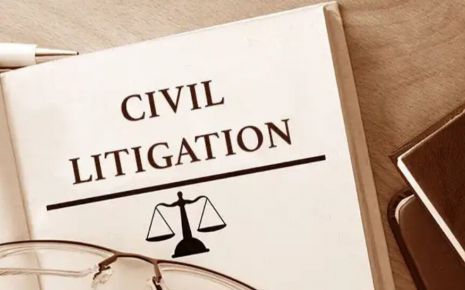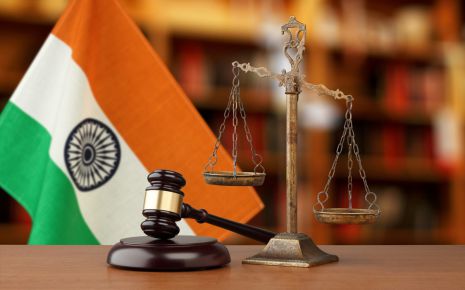An Overview Of Sarfaesi Act, 2002
Firstly, we have to understand the full form the of said act Securitization
and Reconstruction of Financial Assets and Enforcement of Security Interest.
Sarfesi Act allows banks and other financial institutions to auction commercial or residential property to recover loans which becomes NPA.
Introduction:
Before the Sarfaesi Act, of 2002, if the Bank or Financial institution wants to recover the loan which become NPA. They can only file a civil suit to recover the said loan. So, there was a need for reform in the banking sector so the 1ST Narasimham Committee was constituted in 1991, which examined the banking sector reforms and recommended several opinions. Thereafter 2nd Narasimham Committee was constituted in 1998, and it focused on banking reforms & challenges of the 1st Narashima Committee.
Finally, the central government constituted the ANDHYARUJINA COMMITTEE for the purpose of examining banking reform and this committee has given recommendations regarding new legislation for Securitization & empowering banks to gain possession of securities and sell them.
But there were cases that dealt with the same.
The Hon'ble Supreme Court held that although co-operative societies fall in the state list. The co-operative bank's function is the same as of other banks so the court held that the Act is applicable on co-operative banks.
According to the provision of section 13 of the Act. If the borrower fails to discharge his liability within the period of 60 days from the date of Notice, the secured creditor may take recourse namely:
Then the debt recovery tribunal examines the facts and circumstances of the case and evidence produced by the parties. After that, the DRT concludes that the secured creditor may restore or may not restore the assets to the dispute.
In the case of speedy disposal of the application which has not been disposed of within 4 months then applicants may file an appeal in the Debt Recovery Appellate Tribunal (DRAT). For speedy disposal of the said matter.
The DRT shall dispose of the case or application in accordance with the provision of the Recovery of Debt Due to Banks and Financial Institution Act, 1993, and the rules made therein.
In the case of Bank Of Baroda v/s M/S Parasaadilal Tursiram Sheetgrah Pvt. Ltd. 2022 SCC 671:
The Hon'ble Supreme Court observed that the time limit of 45 days for filing an application under section 17 of the Sarfaesi Act, 2002 by any person including the (borrower) Aggrieved by any of the measures referred under section 13(4) of the Sarfaesi Act, is provided for quick enforcement of security interest.
References:
Sarfesi Act allows banks and other financial institutions to auction commercial or residential property to recover loans which becomes NPA.
Introduction:
Before the Sarfaesi Act, of 2002, if the Bank or Financial institution wants to recover the loan which become NPA. They can only file a civil suit to recover the said loan. So, there was a need for reform in the banking sector so the 1ST Narasimham Committee was constituted in 1991, which examined the banking sector reforms and recommended several opinions. Thereafter 2nd Narasimham Committee was constituted in 1998, and it focused on banking reforms & challenges of the 1st Narashima Committee.
Finally, the central government constituted the ANDHYARUJINA COMMITTEE for the purpose of examining banking reform and this committee has given recommendations regarding new legislation for Securitization & empowering banks to gain possession of securities and sell them.
Scope Of Sarfaesi Act, 2002:
The Act applies to all banks and financial institutions.But there were cases that dealt with the same.
Whether Sarfaesi Act Regulate Co-Operative Societies Bank Or Not:
In the case of Pandurang Ganpati Chaugule v. Vishwasrao Patil Murgud Sahakari Bank Limited:The Hon'ble Supreme Court held that although co-operative societies fall in the state list. The co-operative bank's function is the same as of other banks so the court held that the Act is applicable on co-operative banks.
Important Definition Under Sarfaesi Act, 2002:
Arc (Asset Reconstruction Company):
The term ARC is defined under section 2 (ba) of the Sarfaesi Act,2002. Under section 2(ba) it means a company registered with a Reserve bank. Under section 3 of the Sarfaesi Act for the purpose of carrying on a business of asset reconstruction or securitization or both.Who Is Borrower:
Borrower means any person who has been granted financial assistance by any bank or by any financial institution or created any kind of mortgage or pledge as security for such financial assistance is called a borrower. The borrower is defined under section 2 (f) of the Sarfaesi Act.What Is Securitization:
The term securitization has been defined under section 2(z) of the Sarfaesi Act, 2002. It means the acquisition of financial assets by an ARC. Then the ARC raises funds: from acquired financial assets from qualified buyers or by issuing security receipts representing undivided interest in such financial assets.What Is Financial Asset:
Financial assets mean Debt or receivable and also include:- Any Debt by way of mortgage or charge on immovable property.
- Any right or interest in the security whether full or part underlying such debt.
- Any beneficial interest in the property moveable/immovable property.
- Any type of right, title, interest, intangible asset, or property.
Brief Explanation Of Section 13 And 17 Of Sarfaesi Act, 2002
Enforcement Of Security Interest Under Section 13 Sarfaesi Act, 2002:
The enforcement of security interest is dealt with under section 13. This Act empowers banks and financial institutions to issue notice to individuals who have obtained secured assets. For paying the due amount & claim to a borrower (the debtor) to pay the sum due to bank and financial institutions.According to the provision of section 13 of the Act. If the borrower fails to discharge his liability within the period of 60 days from the date of Notice, the secured creditor may take recourse namely:
- Take possession of such assets of the borrower.
- Take over management of the business of the borrower.
Section 17 Of The Sarfaesi Act:
Section 17 of the Sarfaesi Act deals with the Right to Appeal. Section 17 says that any person including the borrower may file an application before the Debt Recovery Tribunal (DRT). Aggrieved by any of the measures referred under section 13(4) of the Sarfaesi Act with the application fee of DRT within 45 (days) from the date on which the measure was taken by the secured creditor.Then the debt recovery tribunal examines the facts and circumstances of the case and evidence produced by the parties. After that, the DRT concludes that the secured creditor may restore or may not restore the assets to the dispute.
In the case of speedy disposal of the application which has not been disposed of within 4 months then applicants may file an appeal in the Debt Recovery Appellate Tribunal (DRAT). For speedy disposal of the said matter.
The DRT shall dispose of the case or application in accordance with the provision of the Recovery of Debt Due to Banks and Financial Institution Act, 1993, and the rules made therein.
In the case of Bank Of Baroda v/s M/S Parasaadilal Tursiram Sheetgrah Pvt. Ltd. 2022 SCC 671:
The Hon'ble Supreme Court observed that the time limit of 45 days for filing an application under section 17 of the Sarfaesi Act, 2002 by any person including the (borrower) Aggrieved by any of the measures referred under section 13(4) of the Sarfaesi Act, is provided for quick enforcement of security interest.
References:
- Elements Of Banking And Insurance By Jyotsna Sethi Nishwanbhatia.
- https://cleartax.in/s/sarfaesi-act-2002
- https://www.indiacode.nic.in/bitstream/123456789/2006/1/A2002-54.pdf
- https://testbook.com/ias-preparation/what-is-sarfaesi-act
- https://byjus.com/free-ias-prep/sarfaesi-act
- https://www.taxmann.com/post/blog/overview-of-the-sarfaesi-act
- https://www.livelaw.in/columns/broader-implications-of-the-pandurang-judgment-on-co-operative-banks-157318?infinitescroll=1
- https://maheshspeak.wordpress.com/2016/08/12/beginners-guide-to-enforcement-of-security-interest-under-sarfaesi-act
- https://cleartax.in/s/gst-actionable-claims-tpa
- https://indiankanoon.org/doc/13870373
- https://www.livelaw.in/pdf_upload/671-bank-of-baroda-v-parasaadilal-tursiram-sheetgrah-pvt-ltd-11-aug-2022-430085.pdf
- https://www.legalserviceindia.com/legal/article-14364-understanding-the-sarfaesi-act-2002-empowering-creditors-and-managing-non-performing-assets.html
- https://byjus.com/free-ias-prep/narasimham-committee
Law Article in India
Legal Question & Answers
Lawyers in India - Search By City
LawArticles
How To File For Mutual Divorce In Delhi

How To File For Mutual Divorce In Delhi Mutual Consent Divorce is the Simplest Way to Obtain a D...
Increased Age For Girls Marriage

It is hoped that the Prohibition of Child Marriage (Amendment) Bill, 2021, which intends to inc...
Facade of Social Media

One may very easily get absorbed in the lives of others as one scrolls through a Facebook news ...
Section 482 CrPc - Quashing Of FIR: Guid...

The Inherent power under Section 482 in The Code Of Criminal Procedure, 1973 (37th Chapter of t...
The Uniform Civil Code (UCC) in India: A...

The Uniform Civil Code (UCC) is a concept that proposes the unification of personal laws across...
Role Of Artificial Intelligence In Legal...

Artificial intelligence (AI) is revolutionizing various sectors of the economy, and the legal i...







Please Drop Your Comments